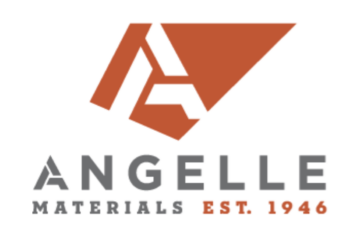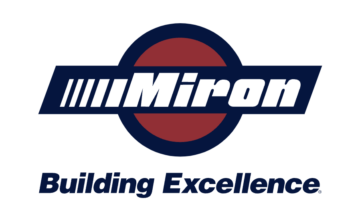hacking—the roughening of a surface by striking with a tool.
hairline crack—see crack, hairline.
hairpin—the wedge used to tighten some types of form ties; a hairpin-shaped anchor set in place while concrete is unhardened; a light hairpin-shaped reinforcing bar used for shear reinforcement in beams, tie reinforcement in columns, or prefabricated column shear heads.
halo effect—see anodic ring effect.
half-cell potential—a nondestructive testing method for identifying regions in a reinforced concrete structure where there is a high probability that corrosion is occurring at the time of test by measuring the potential difference (voltage) between the steel reinforcement and a standard reference electrode; a copper-copper sulfate half cell is commonly used on bridge decks.
Hamm tip—flared shotcrete nozzle having a larger diameter at midpoint than at either inlet or outlet; also designated premixing tip.
hammer—
hammer, impact—see hammer, rebound (preferred term).
hammer, rebound—an apparatus that provides a relative indication of the strength or hardness of concrete based on the rebound distance of a spring-driven mass after it impacts a rod in contact with the concrete surface.
hammer, Schmidt—see hammer, rebound (preferred term).
hammer, Swiss—see hammer, rebound (preferred term).
hand-held breakers—see concrete breakers, hand-held.
hand lance—hand-held wand or tool used to direct a water jet during water blasting; lance may have single water jet or multiple water jets mounted on a rotating head.
hanger—a device used to suspend one object from another object such as the hardware attached to a building frame to support forms. (See also beam hanger.)
hanger, form—device used to support formwork from a structural framework; the dead load of forms, mass of concrete, and construction and impact loads must be supported.
hard-burned dolomite—see dolomite, hard-burned.
hard-burned lime—see lime, hard-burned.
hardened concrete—see concrete, hardened.
hardener—(1) a chemical (including certain fluosilicates or sodium silicate) applied to concrete floors to reduce wear and dusting; or (2) in a two-component adhesive or coating, the chemical component that causes the resin component to cure.
hardness—the resistance of a material to deformation, particularly permanent deformation, indentation, or scratching.
Hardy Cross method—see moment distribution.
harped tendons—see tendons, deflected (preferred term).
harsh mixture—see mixture, harsh.
haunch—a deepened portion of a beam in the vicinity of a support.
haunching—(1) concrete support to the sides of a drain or sewer pipe above the bedding; or (2) work done in strengthening or improving the outer strip of a roadway.
hawk—a tool used by plasterers to hold and carry plaster mortar; generally a flat piece of wood or metal approximately 10 to 12 in. (0.25 to 0.3 m) square, with a wooden handle centered and fixed to the underside. (See also hod and mortar board.)
hazardous substance—any substance that can harm people, other living organisms, property, or the environment.
header—a masonry unit laid flat with its greatest dimension at a right angle to the face of the wall; when the unit is only the depth of the face wythe it is known as a false header. (See also bonder and wythe [leaf.])
heat-deflection temperature—the temperature at which a plastic material has an arbitrary deflection when subjected to an arbitrary load and test condition; this is an indication of the glass-transition temperature.
heat of hydration—heat evolved by chemical reactions with water, such as that evolved during the setting and hardening of portland cement, or the difference between the heat of solution of dry cement and that of partially hydrated cement. (See also heat of solution.)
heat of solution—heat emitted or absorbed by a substance being dissolved in a solvent.
heat-resistant concrete—see concrete, heat resistant.
heating rate—the rate expressed in degrees per hour at which the temperature is raised to the desired maximum temperature.
heavy concrete—see concrete, high-density (preferred term).
heavy-edge reinforcement—see reinforcement, heavyedge.
heavy-media separation—see separation, heavy-media.
heavyweight aggregate—see concrete, high-density (preferred term).
heavyweight concrete—see concrete, high-density.
helical reinforcement—see reinforcement, helical.
hematite—a mineral, iron oxide (Fe2O3), used as aggregate in high density concrete and in finely divided form as a red pigment in colored concrete.
hemihydrate—a hydrate containing one-half molecule of water to one molecule of compound; the most commonly known hemihydrate is partially dehydrated gypsum (also known as plaster of paris), CaSO4?1/2H2O. (See also bassanite.)
Hessian—see burlap (preferred term).
high-alumina cement—see cement, calcium-aluminate (preferred term).
high-bond bar—see bar, deformed.
high-build coating—see coating, high-build.
high-density concrete—see concrete, high-density.
high-discharge mixer—see mixer, inclined-axis (preferred term).
high-early-strength cement—see cement, high-earlystrength.
high-fineness cement—see cement, high-fineness.
high-early-strength concrete—see concrete, high-earlystrength.
high-lift grouting—see grouting, high-lift.
high-molecular weight methacrylate—a low-viscosity substituted methacrylate monomer that is characterized by low volatility.
high-performance concrete—see concrete, high-performance.
high-pressure steam curing—see curing, autoclave (preferred term).
high-pressure water blasting—a process for cleaning, or roughening with a stream of water under high pressure that contains an abrasive such as sand, aluminum oxide, or garnet.
high-pressure water jets—water jets with a force capable of selectively cutting through deteriorated concrete; widely used as a surface preparation method in concrete repair.
high-range water reducer—see admixture, water reducing (high-range.)
high-strength concrete—see concrete, high-strength.
high-strength reinforcement—see steel, high-strength.
high-strength steel—see steel, high-strength.
high-temperature steam curing—see curing, atmospheric-pressure steam and curing, autoclave.
hinge, Mesnager—a permanent semiarticulation or flexible joint in a reinforced concrete arch, wherein the angles of rotation at the hinge are very small; by crossing steel reinforcing bars within the opening between the concrete structural segments, the resultant articulation presents very small resistance to rotation, resists either axial thrust or shearing forces, and is permanently flexible; the center of rotation occurs at the intersection of the reinforcing bars.
hinge, plastic—region where ultimate moment capacity in a member may be developed and maintained with corresponding significant inelastic rotation as main tensile steel elongates beyond yield strain.
hinge joint—see joint, hinge.
hod—a V-shaped trough or a tray, supported by a pole handle that is borne on the carrier’s shoulder, for carrying small quantities of brick, tile, mortar, or similar load. (See also hawk and mortar board.)
hold-down bolt—see bolt, anchor (preferred term).
holding period—see period, presteaming (preferred term).
holiday—a discontinuity in a coating material that exposes the substrate.
hollow-core bit—carbide-tipped drills with internal ports for water flushing or vacuum extraction of cuttings during drilling; used in drilling deep injection ports to minimize plugging of internal cracks intersected by drill hole.
hollow-unit masonry—see masonry, hollow-unit.
homogenous material—a material that exhibits essentially the same physical properties throughout the material.
honeycomb—voids in concrete created when the mortar does not fill all the spaces among coarse aggregate particles.
hook—a bend in the end of a reinforcing bar.
hooked bar—see bar, hooked.
Hooke’s law—see law, Hooke’s.
hoop reinforcement—see reinforcement, hoop.
horizontal-axis mixer—see mixer, horizontal-axis.
horizontal-shaft mixer—see mixer, horizontal-shaft.
horizontal shoring—see shoring, horizontal.
hose, delivery—hose through which shotcrete, grout, or pumped concrete or mortar passes; also known as conveying hose or material hose.
hot cement—see cement, hot.
hot face—the surface of a refractory section exposed to the source of heat.
hot-load test—see test, hot-load.
Hoyer effect—in pretensioned, prestressed concrete, frictional forces that result from the tendency of the tendons to regain the diameter which they had before they were stressed.
hybrid composite—a composite made with two or more types of reinforcing fibers.
hydrate—a chemical combination of water with another compound or element.
hydrate, calcium-silicate—any of the various reaction products of calcium silicate and water. (See also dicalcium silicate and tricalcium silicate.)
hydrated lime—see lime, hydrated.
hydration—combining water with another substance to create a compound; in concrete, the chemical reaction between hydraulic cement and water.
hydraulic cement—see cement, hydraulic.
hydraulic-cement grout—see grout, hydraulic-cement.
hydraulic hydrated lime—see lime, hydraulic hydrated.
hydraulic splitting—a method for removal of concrete by means of hydraulic forces that split concrete into smaller masses.
hydro nozzle—a special prewetting and mixing nozzle consisting of a short length of delivery hose inserted between the nozzle body and nozzle tip.
hydrochloric acid—a mineral acid sometimes used for cleaning or acid etching concrete or removing efflorescence; also known as muriatic acid, which is a 33% HCl solution.
hydrodemolition—a method for removal of concrete by means of water under high pressure directed against a surface; provides a sound concrete substrate and cleans steel reinforcement for reuse.
hydrogen embrittlement—cracking or loss of ductility caused by hydrogen in a metal.
hydrophilic—material which exhibits a strong affinity for water; wettable.
Hydrophobic cement—see cement, hydrophobic.
hydrostatic head—the fluid pressure of a liquid produced by the height of that liquid above a given point.
hydrous calcium chloride—see calcium chloride, hydrous.
hygrometer—an instrument used to measure humidity.
hygroscopic—material that readily absorbs and retains moisture from the air.





